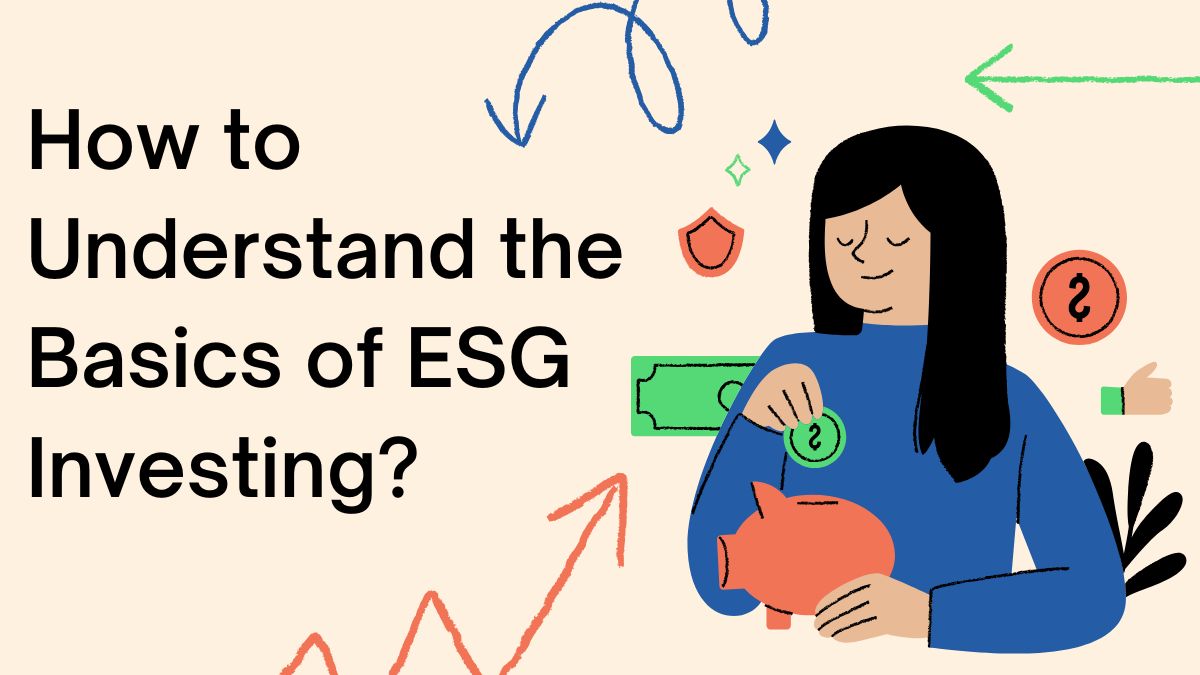Today, investing is more than just a means to make money. More and more people want their investments to reflect their values. That’s where ESG investing comes in. How do you get started? What exactly is it? Let’s break it down in simple terms.
What is ESG Investing?
ESG stands for Environmental, Social, and Governance. This approach goes beyond just looking at the financial performance of companies and investments. As a result, they are assessed based on the performance of three key areas:
- Environmental (E): This looks at a company’s impact on the environment. Are they reducing their carbon footprint? Do they manage waste responsibly? Are they protecting natural resources? Think about things like:
- Climate change and greenhouse gas emissions.
- Renewable energy.
- Water and waste management.
- Pollution prevention.
- Social (S): Describes how a company interacts with its employees, customers, and community members. Are they treating their workers fairly? Do they have good labor practices? Are they involved in community development? Examples include:
- Labor standards and working conditions.
- Product safety and consumer protection.
- Diversity, equity, and inclusion.
- Community relations.
- Governance (G): This examines how a company is run. Are they transparent and accountable? Do they have ethical leadership? Are their board members independent? This includes:
- Board diversity and independence.
- Executive compensation.
- Shareholder rights.
- Business ethics and anti-corruption.
Why is ESG Investing Important?

ESG investing is gaining popularity for several reasons:
- Alignment of Values: Many investors want their money to be invested in companies that share their values. If you care about climate change or social justice, ESG investing lets you put your money where your mouth is.
- ESG practices are often linked to better management and a higher level of resilience in a company. They’re less likely to face scandals, fines, or reputational damage.
- A good ESG score may result in better returns over time: Some studies suggest this is true. This is because they’re often more innovative, efficient, and better at managing risks.
- Positive Impact: ESG investing allows you to contribute to a more sustainable and equitable future. It is possible to drive positive change by supporting companies that are responsible.
How to Get Started with ESG Investing?
If you’re interested in ESG investing, here’s how to get started:
- Define Your Values: What issues are most important to you? Climate change? Human rights? Ethical leadership? Knowing your priorities will help you choose investments that align with your values.
- Research ESG Ratings: Several organizations provide ESG ratings for companies and funds. These ratings can help you assess a company’s performance in environmental, social, and governance areas. Some common ESG rating providers are: MSCI ESG Research, Sustainalytics, Refinitiv.
- Explore ESG Funds and ETFs: Many mutual funds and exchange-traded funds (ETFs) focus on ESG investing. Companies are typically screened based on their ESG performance by these funds. Look for funds that match your values and investment goals.
- It is also possible to invest directly in companies with strong ESG practices. Research companies in sectors like renewable energy, sustainable agriculture, or social impact businesses.
- If you’re unsure where to begin, consider consulting a financial advisor who specializes in ESG investing. They can help you create a portfolio that aligns with your values and risk tolerance.
- The concept of Greenwashing is when a company or fund claims to be sustainable when it is not. Be cautious and do your research. Look for transparency and clear evidence of ESG performance.
- Investing in ESG doesn’t have to be all at once. Start small and learn. You can begin with a small portion of your portfolio and gradually increase it as you gain more experience.
- Investing in ESG can be a complex process, which is why it’s important to monitor your holdings regularly. Track their performance and ensure they continue to align with your values.
Types of ESG Investment Strategies
There are different strategies within ESG investing:
- Investments in companies that engage in harmful activities, such as tobacco, weapons, or fossil fuels, should be excluded from inclusionary screening.
- A best-in-class screening strategy focuses on investing in companies with outstanding environmental, social, and governance performance.
- The goal of impact investing is to generate both financial returns and positive social and environmental effects.
- An example of this is investing in renewable energy or clean water, which are topics related to sustainability.
- A way of assessing investment risks and opportunities using ESG factors is ESG integration.
Challenges of ESG Investing
ESG investing can offer many benefits, but it also has some drawbacks:
- Companies cannot compare ESG ratings because there is no universal standard.
- There can be a lack or inconsistency in ESG data, especially for smaller businesses.
- There is a possibility of greenwashing, as some companies may exaggerate their ESG performance.
- Investing in ESG often leads to lower returns, although this is not always the case.
The Future of ESG Investing
The number of investors aligning their investments with values is expected to grow as ESG investing continues to gain traction. Increasing awareness of environmental and social issues will increase the pressure on companies to improve their environmental, social, and governance performance.
A portfolio that reflects your values and contributes to a better world can be built by understanding ESG investing basics.

